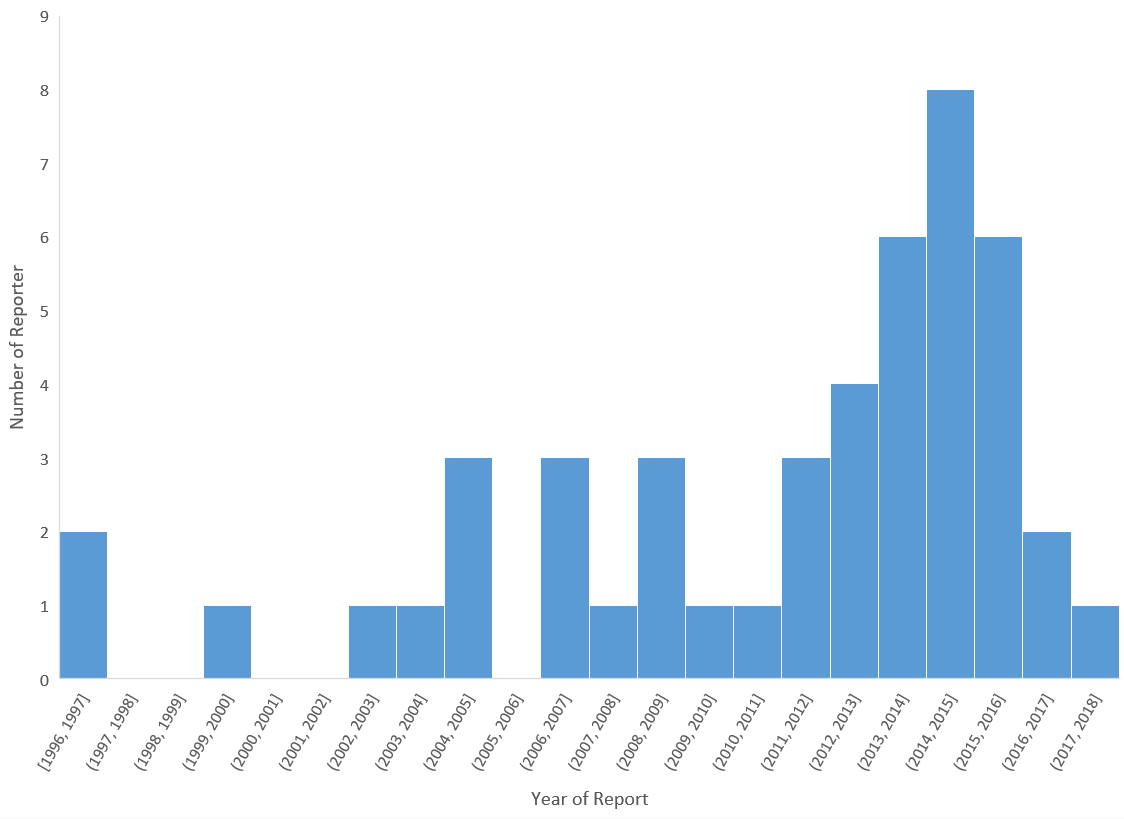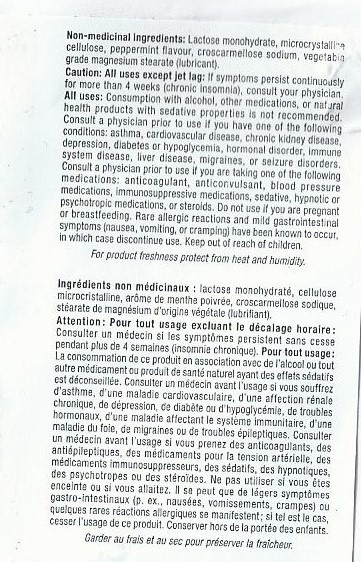After a flourishing period of melatonin manufacturing, hundreds of brands with doses range from 2 mg to 10 mg per tablet are available over-the-counter without a prescription. It is common for some people live in USA and Canada using melatonin for over 10 years. All stories between human and melatonin start since we exist – it is a natural excreted hormone in our body to regulate circadian rhythm. But humans really getting to know and use melatonin is from the last century, especially after it being allowed to be sold as a dietary supplement by Health and Education Art since 1994 in USA.

Chart 1. Number of Received Reports vs Initial Received Time
Based on 47 serious adverse reactions reports during 1994-01-01 to 2018-06-30 retrieved from Canada Vigilance Adverse Reaction Online Database on Health Canada, overdosing on melatonin could result in anxiety, depression, blood pressure increased, coma and so on. A great increase of reports shows up after 2011. There is no remarkable difference among 4 generations (realized generational interval = 21 years).

Chart 2. Reporter Partition vs Age (generational interval = 21)
Unlike the North Americans, Europeans are stricter with oral supplementation of this “timing hormone”. Denmark and Czech Republic prohibit melatonin as a food supplement. In UK, pharmacies ask for prescriptions from people who purchase melatonin. Manufacturers in Belgium and Germany provide their products with low dose at 0.3 mg for daily use and higher dose for special medicinal purpose. Spain and Italy limit the daily dosage at 1 mg while physiological efficacy is retained.
Interestingly, according to Natural Health Products Ingredients Database from Health Canada, oral melatonin is applicable to adults 18 years and older with daily dose from 0.1 – 10 mg for non-jet lag uses and 0.5-10 mg for jet lag. No label notifies the restricted use of melatonin on the minority.

Figure 1. Surface Label of Commercially Available Melatonin
The database also warns the uncertain safety of long-term use and possible physiological hazards with alcohol and other drugs and mental sedation. Manufactures avoid mentioning those cautions in advertising though they print those in the relatively small font on the hidden label in which customers have to remove the cover indicated by ”PEEL HERE” in the corner.

Figure 2. The Hidden Label with Cautions and Warnings